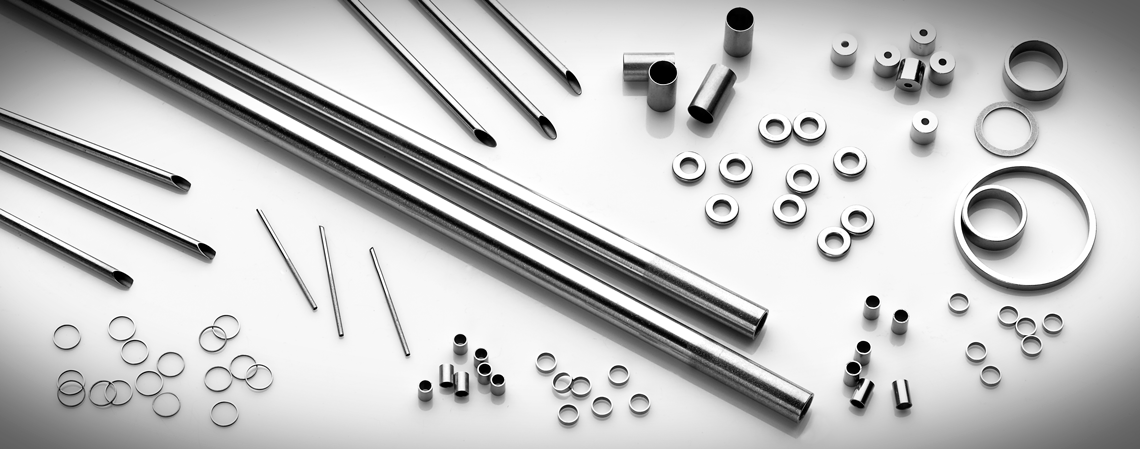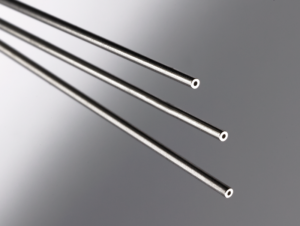How Tubing Characteristics Affect the Process and Its Accuracy
Within the fields of biotechnology and laboratory automation, the global in vitro diagnostics (IVD) market is expected to reach $96 billion by 2025 according to research firm MarketsandMarket™. It makes sense that the use of automated liquid dispensing systems will grow along with the demand for IVD.
Many variables have an impact on the performance of these fluid dispensing systems, including:
- The type of liquid being sampled
- Any reagent chemical that is used
- The type of pumping device
- The amount of force the pump exerts
In addition, the tubing used in these systems can significantly affect the fluid dispensing process and testing accuracy in IVD and other applications. Let’s take a closer look at some important considerations for the precision tubing used in liquid dispensing systems.
How can you reduce carryover in fluid dispensing systems?
Part 1 of this blog series on liquid dispensing systems discussed the potential issue of carryover. It can occur when liquid from a previous sample is not completely washed away, causing possible contamination problems in subsequent samples.
Among other things, carryover can be caused by:
- A liquid wicking up the outside of a dispensing tube
- The formation of a “last drop” lingering at the bottom of the tube
In any lab procedure, maintaining a clean environment is crucial. So naturally, cleaning the tubing is part of the process of using liquid dispensing systems — helping to reduce the amount of carryover to the commonly accepted 4 ppb (or better).
Reducing carryover from one sample to another not only combats contamination, but also helps to do two things:
- Lowers the total cost of the testing through more efficient use of reagents, which are very expensive
- Improves the accuracy of test results by dispensing more precise amounts of liquid
Is cleaning alone enough to prevent carryover?
The overall effectiveness of the washing process — that is, whether all residue from the previous sample can be removed from liquid dispensing systems — will vary from one application to another, since cleaning is a function of many factors.
These factors include (but are certainly not limited to):
- The time allowed for cleaning
- The cleaning solution used (since different metals may require different solutions)
- The amount of cleaning solution used
- Whether there is time for soaking in bleach
- How many times a cleaning solution and/or water can be flushed through the system
- The volume of water used (approximately 100 times the volume of the sample is a common standard)
- The pressure applied as a system is cleaned and rinsed
However, attaining minimum carryover can be more challenging in large laboratory settings where a high volume of testing must be performed in order to be profitable.
In addition, since liquid dispensing systems often use tubing with inside diameters (IDs) as small as 50 or 100 microns, the characteristics of the precision tubing itself have an impact on both carryover and the cleaning process.
How does the tube end cut affect carryover in liquid dispensing systems?
As mentioned in the previous blog, the way in which the end of the tubing is formed can help to reduce the risk of carryover in liquid dispensing systems. For instance, rounding the dispensing end of the tube will reduce the ability for a last drop to form; however, it can also allow wicking to occur, depending on the liquid that is being dispensed.
Or, instead of a flat, 90º cut-off at the end of the tube, having a more angled, pointed end with sharp walls would provide less surface area on which a last drop can form. However, again depending on the liquid that is being dispensed, this “pointy” end might change how the liquid comes out of the tube, which might in turn impact testing accuracy.
However, with precision tubing that has a diameter almost as small as a hair, it can be difficult to get a clean end cut. In addition, special care must be taken to not collapse the tube during the precision tube cutting process.
But assuming that the proper cut-off can be achieved (a task that’s a specialty of Metal Cutting Corporation), any possible issues associated with the end of the tube can be addressed by:
- Testing the tubing with the specific liquid that will be dispensed
- Identifying the process that achieves most — but realistically, perhaps not all — of the desired outcomes
How does tubing ID affect fluid dispensing systems?
The general rule is that the smaller the ID of the tubing, the better the accuracy in fluid dispensing systems. That’s because a small ID produces faster linear velocities and smaller “mixing zones,” allowing the sample components to remain as concentrated as possible.
One of the most important aspects of tubing ID in these dispensing systems is its surface finish. The American Society of Metals defines surface finish as the “condition of the surface as the result of a final treatment and measured surface profile characteristics, with the preferred term being roughness.”
It is generally accepted that the rougher the ID surface is, the more carryover there may be and, we believe, the more difficult it becomes to achieve 4 ppb. This is because a rougher tubing ID surface has tiny “nooks and crannies” where liquid residue can be sheltered from the effects of the washing process.
So, in addition to having the proper end cut on the tubing (e.g., flat, angled, or rounded), having a tubing ID surface that is as smooth as possible can help to further reduce the chances of carryover from one sample to another.
An Ra or RMS value of 6-8 is considered a good level of smoothness. (The arithmetic mean, or Ra, is the average roughness expressed in units of height, typically microns. The RMS, also known as Rq, is the root mean square value corresponding to the Ra.)
In addition, the tubing ID will determine how smoothly samples flow in liquid dispensing systems. Imperfections in the surface finish can result in swirling, eddying, or buffeting of the liquid as it moves out of the tube, which can create problems in applications where it is critical that the liquid is dispensed smoothly.
How does tubing OD affect liquid dispensing systems?
A smooth surface finish on the outside diameter (OD) of the tubing is also important if a testing process requires aspirating, in which the entire tube goes into the liquid to draw a vacuum. However, OD surface finish is much less of a factor in the dispensing process.
In the process of micro-pipetting, which involves both aspirating and dispensing but usually only one liquid, carryover in the tubing is less of a problem as long as:
- The pipette is digitally calibrated to dispense an exact amount of liquid repeatedly
- The tolerance of the dispensing instrument (e.g., ±2-3% or ±5%) — and therefore, the amount of liquid that may be left in the tubing — is taken into account
How can tubing ID surface finish be improved?
Since any variation in the inside wall of a dispensing channel can have an impact on the process used in liquid dispensing systems, having a clean, burr-free ID is critically important.
If you’ve gone to the trouble of picking a particular type of tubing at a specified length and tested it with the chosen machine and pump to determine that it dispenses the correct volume of sample material, you certainly don’t want to jeopardize test accuracy by not also specifying the desired surface finish for the tubing ID.
Fortunately, technology has advanced so that there are now several methods that can be used to improve the surface finish on the ID of very small precision tube cutting used in liquid dispensing systems. Some options include:
- Micropolishing and/or passivation
- Bore enhancement via use of a “bright draw” process
- Coatings such as silicone, PTFE, or PSX
- Abrasive flow machining or extrude honing
As with the end cut on the tubing, any possible issues associated with a finishing method must be weighed against the overall goals and the process that will, realistically, yield the best results.
For example, coating the tubing used in liquid dispensing systems can help to solve carryover problems. However, when the tubing is cut to meet the requirements of a particular system and application, parts of the coating may be exposed, lessening its effectiveness.
This is where Metal Cutting has been successful in cutting coated tubing without adversely affecting the coating, with results validated in testing for specific applications.)
Pay close attention to your tubing specifications!
With the wide range of factors that can have an impact on the accuracy of liquid dispensing systems, specifying the characteristics of the tubing used in these systems can seem like a daunting task.
Fortunately, the right metal tubing provider and team of metal cutting specialists can help you decide on a cutting method, ID surface finishing, and other features that will meet your needs and be cost-effective for your particular application.
In part 3 of this blog series, you can read how high pressure affects the precision tubing used in liquid dispensing systems. Or to explore different precision cutting options for your metal tubing or other metal part needs, download our free guide, Choose with Confidence: Comparing 2-Axis Cutting Methods.






